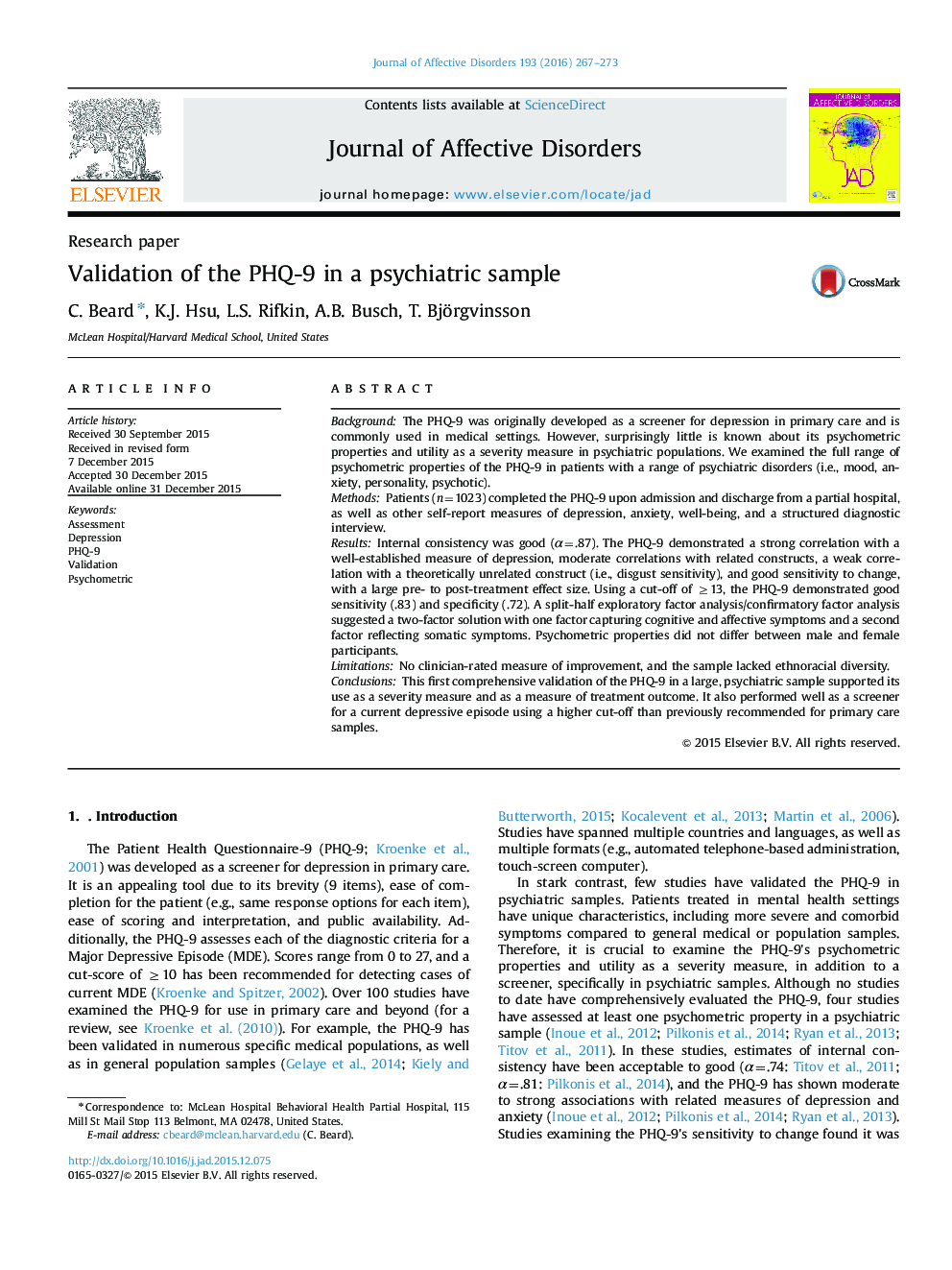| Article ID | Journal | Published Year | Pages | File Type |
|---|---|---|---|---|
| 6230481 | Journal of Affective Disorders | 2016 | 7 Pages |
â¢We provide the first comprehensive validation of the PHQ-9 in a psychiatric sample.â¢A cut-off of â¥13 yielded good sensitivity and specificity.â¢PHQ-9 demonstrated good convergent and discriminant validity.â¢PHQ-9 was sensitive to changes following acute treatment.
BackgroundThe PHQ-9 was originally developed as a screener for depression in primary care and is commonly used in medical settings. However, surprisingly little is known about its psychometric properties and utility as a severity measure in psychiatric populations. We examined the full range of psychometric properties of the PHQ-9 in patients with a range of psychiatric disorders (i.e., mood, anxiety, personality, psychotic).MethodsPatients (n=1023) completed the PHQ-9 upon admission and discharge from a partial hospital, as well as other self-report measures of depression, anxiety, well-being, and a structured diagnostic interview.ResultsInternal consistency was good (α=.87). The PHQ-9 demonstrated a strong correlation with a well-established measure of depression, moderate correlations with related constructs, a weak correlation with a theoretically unrelated construct (i.e., disgust sensitivity), and good sensitivity to change, with a large pre- to post-treatment effect size. Using a cut-off of â¥13, the PHQ-9 demonstrated good sensitivity (.83) and specificity (.72). A split-half exploratory factor analysis/confirmatory factor analysis suggested a two-factor solution with one factor capturing cognitive and affective symptoms and a second factor reflecting somatic symptoms. Psychometric properties did not differ between male and female participants.LimitationsNo clinician-rated measure of improvement, and the sample lacked ethnoracial diversity.ConclusionsThis first comprehensive validation of the PHQ-9 in a large, psychiatric sample supported its use as a severity measure and as a measure of treatment outcome. It also performed well as a screener for a current depressive episode using a higher cut-off than previously recommended for primary care samples.
